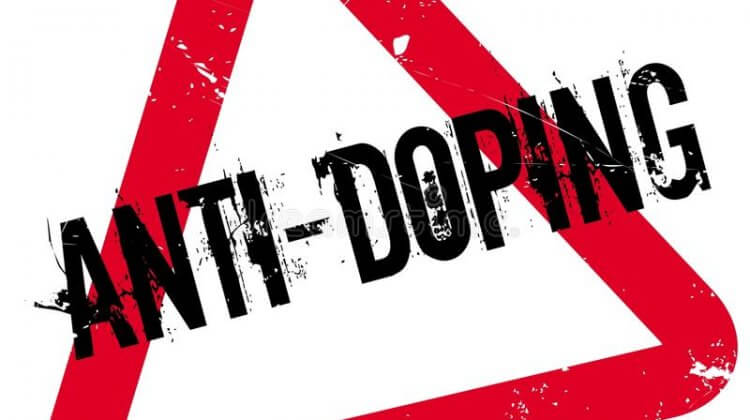
It will likely come as no surprise that steroids and other enhancing substances carry both risk and potential for achieving specific body goals. The physical risks of use are well known within steroid communities, while the results – both desired and undesired – are visible on the bodies of some of those same community members. What may be more surprising is the broader scope of what contributes to (or reduces) risk when we zoom out from the purely physical side of things and consider national-level laws and approaches to enhancement drugs. For example, some countries have made doping substances – especially steroids – illegal to buy or sell, while others have criminalized possession and/or use similarly to illicit recreational drugs. In other countries it is also possible to buy and use image and performance enhancing drugs (IPEDs) without any real risk of police interference. In general, though, anti-doping responses have largely come to focus on individuals, whether through testing and sanctioning or education and prevention. This focus at the individual and psychological levels has, however, tended to background or even ignore some of the broader environmental factors that shape doping behaviors. Put differently: Though different countries presumably intend to promote health with their punitive approaches, they can ignore the fact that strict policies against steroids may actually structure use environments in ways that result in greater potential risk. And these risks don’t stop with the physical. Rather, laws impact the entire use environment, including social, economic, and political risk factors.
From risk and harm to enabling environments
One way to shift the environment from one of risk and harm to one that enables (safer) use, is through harm reduction strategies. Harm reduction does pretty much what it says on the tin, by seeking to reduce harms related to use. Laws around steroids, however, can make it more or less likely that such methods are available. Some countries, such as Sweden, criminalize all aspects of steroids, from trafficking to possession and use. These criminal policies make it unlikely or even impossible for harm reduction services to be available. There are educational systems and prevention strategies implemented at a national level, but when individuals decide to engage in steroid use, such strategies are largely useless or at least their effect on risk reduction is minimal. In contrast, other countries have more liberal policies – including full decriminalization – that make it more likely that harm reduction services can be offered. Many, however, fall in between these two extremes and have a partially criminalized system. For example, U.K. law allows for purchase and use, but not for the sale, of steroids. In many ways, the legal orientation to steroids taken by each country can determine the full range of risks individuals face and, in some cases, actually produce more risk.
The physical risks are often the most straightforward in terms of use: all use carries risk, some to a greater extent than others. Ways of reducing those risks are also pretty clear, as safe supply, good injection hygiene, biomarker/blood test monitoring, and knowledgeable advice on substances and dosing can greatly minimize potential harm. However, criminal penalties can force use underground and leave individuals without access to a secure supply of reliable substances or without the support that would decrease the chances of negative side effects. A study of Swedish recreational steroid users, for example, showed that some users were reluctant to seek medical support when faced with unwanted side effects, that they sometimes used a trial-and-error strategy when learning how to inject rather than being properly educated, and that they felt stressed by having to engage with criminal networks to get hold of the wanted substances. One of the participants in the study said the following about a situation when he was detained at a gym and the police went to his house to do a search for IPEDs:
I only had a small maintenance-dose at home at the moment. I was not doing a heavy course at the time. No, but it’s illegal but they probably expected to find an AK47 and hand grenades and some really heavy stuff. That would be their hope. (Andreasson & Henning, 2021)
Even needle and syringe exchange programs can be rare, if not impossible, where criminalization is strictly enforced and users are suspected for being heavily involved in criminalized lifestyles. Making use less physically risky is, however, positive for both individuals and public health. Physical harm reduction is not enough, though, to shift the use environment to one that truly enables safer use. For that, we must consider the other risk factors impacted by laws around substances.
Social risks of use include being marginalized or stigmatized if use is discovered, as alluded to above. Policies can mirror and determine what is socially (un)acceptable. Zero-tolerance or prevention-only policies can set up a social belief that certain (built) bodies are “bad” or deviant somehow. This is similar to political risks that may lead individuals to engage with criminal networks to source substances that they wouldn’t otherwise. Criminalization can add to this, as suddenly a person is not just a person who uses steroids, but they are a criminal and under the purview of the criminal justice system. More liberal policies can work to do the opposite by reducing both the ways use would be made public and the opportunity for stigmatization, especially by eliminating the risk of being viewed as a criminal. Economic risks include heavy fines related to use being discovered or loss of employment resulting from criminal prosecution. Again, removing these factors with more liberal policies greatly decreases these economic risk factors.
Online enabling environments and their limitations
Given the intolerance of steroids generally, and in criminalized contexts specifically, it is not surprising that alternative ways of investigating and accessing steroids have emerged and a global subculture around use has developed. As well recognized, online forums are one place where steroid communities can come together to share their experiences and exchange knowledge and expertise on managing the effects of various substances. Harm reduction is the cornerstone of many of these interactions. Many members are searching for ways of maximizing positive results (muscle growth or strength gains, for example) while reducing the negative side effects (acne, gynecomastia, etc.). However, we also see there are other dimensions to it. As online advice must still be practiced in the offline world, it makes sense that forum members would have concerns and share strategies to reduce the full range of risks – not least avoiding criminal penalties. However, there are still important risks to consider within these pro-use environments, too. Though many community members are highly knowledgeable, the quality of advice can vary depending on who is giving it, and distinguishing good advice from bad can be tricky for new users. Much expertise presented in the context of online communication is self-declared, meaning most have no formal training or education about health or substance use. Further, in the discussions on these forums the ambition is rarely to stop or prevent use, but to enable effective and safe use. Though that may sometimes include delaying or reducing a dose, the community is still one centered around use practices. Together, this may lead to an exaggerated view of how normal or widespread use – or some extreme forms of use – really is, as well as how necessary it is to make progress towards an individual’s specific goals.
It is also important to consider the impacts of online engagement in the offline context. Use may be discussed online, but the physical realities and personal consequences of it are experienced in the offline world. For example, users may face social, legal, or economic consequences if use is discovered where it’s criminalized. In other semi-criminalized contexts, acquisition may be done face to face, opening up risks for sellers who may face criminal penalties and buyers who must rely on local sellers who may or may not have appropriate products for their needs. The line between online/offline is further blurred once these offline experiences begin making their way back online in the form of cycle logs, commentary, and further advice that is then passed onto other users. In this way, the online experience informs offline use that then re-informs the online in a kind of circular pattern.
Conclusion
Policies targeted at individuals, such as criminalizing the sale, purchase, possession, and/or use of steroids, have had clear unintended effects at the environmental level and resulted in creating risks for users beyond those stemming from use itself. This anti-doping risk environment has become formative for steroid practices in ways that are likely in direct opposition to what was intended. However, we can see how the introduction of harm reduction strategies can take various forms, depending on what is allowed in the local setting, and help enable safer forms of use. Formal harm reduction focused on user health and needs offers an environment in which safer use is supported and promoted. Without formal harm reduction services, users themselves find ways to respond and push back against restrictions to enable their own use, including through the online context. Moving away from macro-level approaches focused on policing and punishment and towards acceptance and support offers benefits not only individuals, it can also have enduring benefits for public health.
About the author
Warning: Undefined array key "display_name" in /home/thinksteroids/public_html/wp-content/plugins/molongui-authorship-pro/includes/hooks/author/box/data.php on line 11
Warning: Undefined array key "display_name" in /home/thinksteroids/public_html/wp-content/plugins/molongui-authorship-pro/includes/hooks/author/box/data.php on line 11
Warning: Undefined variable $show_related in /home/thinksteroids/public_html/wp-content/plugins/molongui-authorship/views/author-box/parts/html-tabs.php on line 30


Leave a Reply
You must be logged in to post a comment.